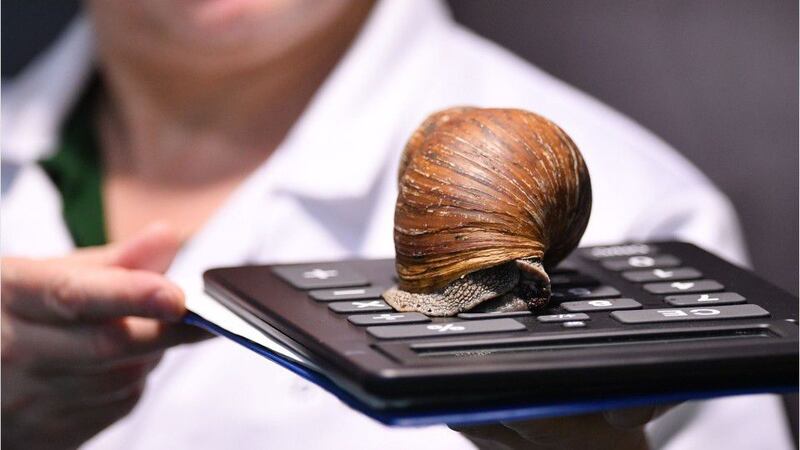NEW YORK — Snails are slow and slimy. Some species are also invasive, and customs officials found nearly two dozen of them in a man’s luggage at New York’s John F. Kennedy International Airport.
U.S. Customs and Border Protection agriculture specialists examining luggage Sunday discovered 22 giant African snails, the agency said in a news release on Tuesday. The specialists also found prohibited oxtail, dried beef, turkey berry, carrot and medicinal leaves, the agency said. Agents also found prekese, a traditional African spice and medicinal plant product. The items other than the snails weighed about 24 pounds, WNBC reported.
The traveler carrying the illegal items was a U.S. citizen who had flown to New York from Ghana, the CBP said in its news release.
CBP agriculture specialists at @JFKairport discovered 22 Giant African Snails during a baggage examination. According to the @USDA, the Giant African Snail is one of the most damaging snails in the world as it consumes at least 500 types of plants.
— CBP (@CBP) April 7, 2021
Go ➡️ https://t.co/ltVh1e6A5B pic.twitter.com/SmHnejMFUB
According to the U.S. Department of Agriculture, the giant African snail (Lissachatina fulica) is “one of the most damaging” snails in the world. The species eats at least 500 types of plants, the CBP said in its release. The shelled gastropod also poses a threat to U.S. agricultural resources and is particularly damaging to areas with tropical and subtropical climates.
“The highly invasive Giant African Snail also poses a serious health risk to humans because it carries a parasitic nematode that can lead to meningitis,” the agency said.
The snail reproduces quickly and can produce about 1,200 eggs annually, the USDA said. The snail can also cause structural damage to structures made of plaster and stucco, the CBP said.
“Customs and Border Protection agriculture specialists are our nation’s frontline defenders against invasive plant and animal pests that threaten our agricultural resources, and they face this complex and challenging mission with extraordinary commitment and vigilance,” Marty C. Raybon, acting director of field operations for CBP’s New York field office, said in a statement.
According to the USDA, the giant African snail was first found in southern Florida in the 1960s. It took 10 years and $1 million to get rid of them, the CBP said. The snail was reintroduced in Miami in September 2011.
Cox Media Group








